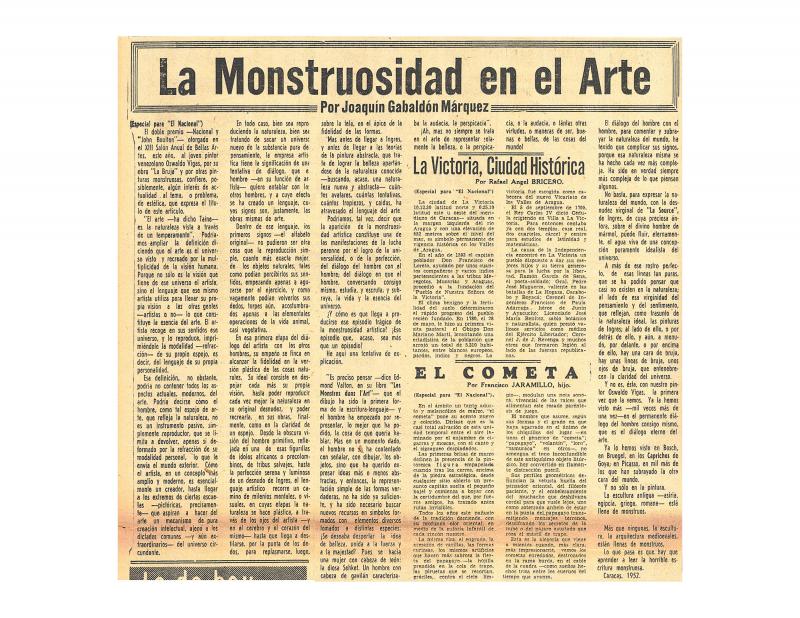In 1978, the painter Oswaldo Vigas (1926?2014) returned to the exhibition circuit after a four-year absence. The work he presented included certain visual ideas he had used in the past, which prompted some pondering—by some critics—about the legitimacy of reiteration in the creative process; meaning the use of the work itself as a source of creative inspiration. On this point—that is, a sort of “return” to his earlier subjects—Vigas’ work survived the critical appraisal; reiteration was not seen as repetition but as a consistent and faithful continuation of an existential discourse with, in this case, Latin American roots.
The opinion expressed by the Venezuelan writer and critic Juan Liscano (1915–2001) involves a renewed comparison between lyrical and analytical movements, understood here as the “technological art” that yields to the vicissitudes of the market. In other words, his conclusions are understood as a sort of statement of principles in support of Expressionism that countered the rising importance of Kinetic art and the new Realism. This statement was directed at painting as such, neither Figurative nor Abstract, but at the expression of representative and symbolic contents. Roberto Guevara offers another view on this particular moment in the painter’s career in his article “Vigas: proceso abierto” [doc. no. 1152753], published in El Nacional, Caracas, October 24, 1978, A4.
For more information about Oswaldo Vigas and his work, see the essay by Marta Traba “Oswaldo Vigas / Pinturas 1943 – 1973” [doc. no. 1106962]; the articles by Roberto Montero Castro “Vigas en el ojo ajeno - Plástica e identidad latinoamericana” [doc. no. 1153266], and “Oswaldo Vigas: la lucha por descubrir la identidad americana” [doc. no. 1168108]; Joaquín Gabaldón’s comments in “La monstruosidad en el arte” [doc. no. 850831]; the article by Lenelina Delgado “De la pintura al tapiz” [doc. no. 1153365]; and the article by A. Feltra “Vigas sufre de afán publicitario” [doc. no. 1155580].







